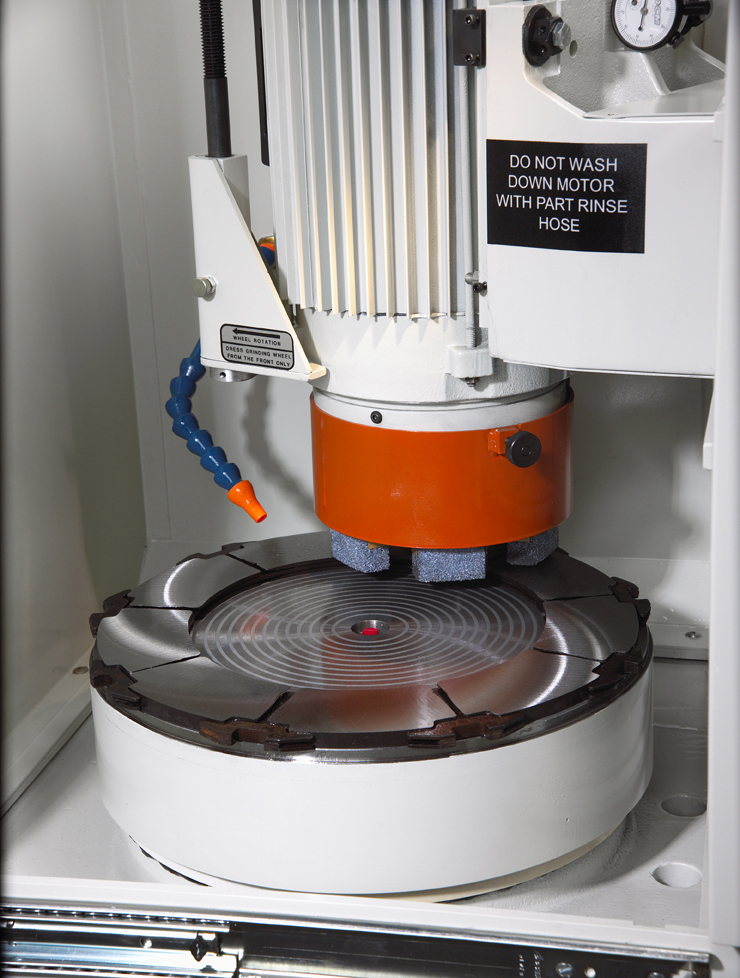For aircraft MROs, precision grinding plays an important role in the maintenance, repair, and overhaul of various critical components like aircraft brake rotors. Periodically, the brake rotors require resurfacing, a maintenance process used to restore the surface of the rotors, typically made of iron or steel. Today, advanced precision grinders can speed rotor resurfacing by leveling surface irregularities to improve performance, safety, and longevity.
Conventional reciprocating surface grinders with a reciprocating table and a horizontal spindle that spins the grinding wheel have a slow material removal rate due to multiple table passes across the work piece being required to complete the work and a skilled operator to continually monitor the grind process.
Conventional rotary surface grinders (without technological enhancements) are a faster option than reciprocating surface grinders but can be problematic in the hands of less experienced operators.
Now, rotary surface grinders are designed with much more advanced sensors and control technology that allows for an interface with easy-to-use touchscreen HMI’s. These surface grinders outperform conventional surface grinders (both manual rotary and reciprocating) by more efficiently removing large amounts of material, maintaining close tolerances, and reducing process time.
“Features such as variable feed rate and spindle speed, single or multi-step grinding, and easily programmable grind processes make this machine an ideal platform for processing a wide range of materials,” says Mike Anderson, a technical specialist at DCM Tech, Inc, a company that designs and builds industrial semi-automated rotary surface grinders.
According to Anderson, the machine most often selected for aircraft brake rotor grinding is DCM Tech’s IG 080 M, which is economical and ideally sized to handle large aircraft rotors. The grinder includes an 18” diameter variable strength electromagnetic chuck that quickly and securely holds brake rotors of various sizes during processing.
The surface grinder holds the workpiece firmly in place on a rotating table underneath a vertical spindle. Unlike conventional grinders, the grinding is not performed by the peripheral edge of the wheel, but by the entire diameter of the abrasive surface. Anderson says this is similar to a lawn mower blade that can cut a wide swath of grass versus a blade run on its end, which will only cut a narrow strip.
For more information, call (800) 533-5339, email info@dcm-tech.com, visit http://www.dcm-tech.com.

